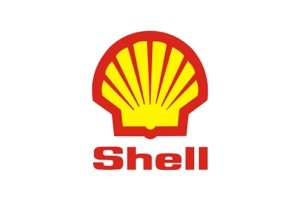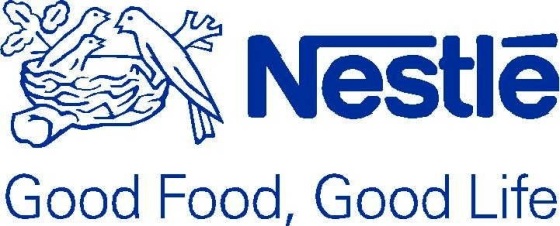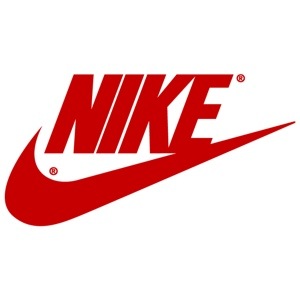1. Global Organizational Model
In his book “A Manager’s Guide to Globalization” Dr. Steven Rhinesmith says, “Going Global does not mean just doing business abroad”. It is easy to see that this misconception is widely prevalent in many of today’s organizations.
In a true Global Company there is harmony between different cultures. Resources and materials are moved seamlessly across different countries so that the company enjoys maximum competitive advantage.
Example of a global company is Royal Dutch Shell. Because Shell is pushing forward, hoping to begin drilling this July for some of the estimated 90 billion barrels of recoverable oil in the Arctic. Over the next 10-20 years, the company expects oil from the Arctic to be its largest source of crude.
In the short-term, Shell has done well, boosting its earnings for the first quarter of 2012 by 11%, compared to the previous year, to $7.7 billion. Part of the increase in earnings comes from Shell’s long-term projects that have just started producing: namely, a gas-to-liquids plant in Qatar and projects in the Canadian oil sands.
2. Transnational Organizational Model
A Transnational Corporation (TNC) differs from a traditional MNC (Multinational Company) in that it does not identify itself with one national home. While traditional MNCs are national companies with foreign subsidiaries, TNCs spread out their operations in many countries sustaining high levels of local responsiveness.
Transnationals can compare costs at different locations, and can switch activities to different areas as appropriate. Transnationals are made possible by improved international communications which provide rapid containerized transhipment and foreign travel, easy communication of information, and international mobility of capital. When one market is saturated, the multinational can rapidly develop others, since foreign investment cuts transport costs, and makes possible a rapid response to local markets. It also eases tariff barriers—the UK has been an attractive location for many Japanese manufacturers.
An example of a TNC company is Nestlé who employ senior executives from many countries and try to make decisions from a global perspective rather than from one centralized headquarters.
3. International Organization Model
An international business company or international business corporation (IBC) is an offshore company (a company which is incorporated outside the jurisdiction of its primary operations) formed under the laws of some jurisdictions as untaxed company which is not permitted to engage in business within the jurisdiction in which it is incorporated.
One of the examples that i choose is Guangzhou Shipyard International Co., Ltd. (GSI). GSI, which was parented by China State Shipbuilding Corporation, is the largest modern integrated shipbuilding enterprise in South China and one of the 500 biggest enterprises in China. GSI is based on core operations of shipbuild-ing and focused on building and exploitation of handy size ships.
4. Multinational Organizational Model
A multinational corporation/company is an organisation doing business in more than one country. ‘In other words it is an organisation or enterprise carrying on business in not only the country where it is registered but also in several other countries. It may also be termed as international corporation, global giant and transnational corporation.
According to the United Nations a multinational corporation is “an enterprise which owns or controls production or service facilities outside the country in which it is based”. In the words of W H Moreland, “Multinational Corporations or Companies are those enterprises whose management, ownership and controls are spread in more than one foreign country”.
Thus a multinational company carries on business operations in two or more countries. Its headquarters are located in one country (home country) but its activities are spread over in other countries (host countries). MNC’s may engage in various activities like exporting, importing, manufacturing in different countries. It may also lend its patents, licences and managerial services to firms in host countries.
Characteristics of Multinational Companies (MNCs)
The distinctive features of multinational companies are as follows.
1. Large Size:
A multinational company is generally big in size. Some of the multinational companies own and control assets worth billions of dollars. Their annual sales turnover is more than the gross national product of many small countries.
2. Worldwide operations:
A multinational corporation carries on business in more than one country. Multinational corporations such as Coco cola has branches in as many as seventy countries around the world.
3. International management:
The management of multinational companies are international in character. It operates on the basis of best possible alternative available any where in the world. Its local subsidiaries are managed generally by the nationals of the host country. For example the management of Hindustan Lever lies with Indians. The parent company Unilever is in The United States of America.
4. Mobility of resources:
The operation of multinational company involves the mobility of capital, technology, entrepreneurship and other factors of production across the territories.
5. Integrated activities:
A multinational company is usually a complete organisation comprising manufacturing, marketing, research and development and other facilities.
6. Several forms:
A multinational company may operate in host countries in several ways i.e., branches, subsidiaries, franchise, joint ventures. Turn key projects.
Nike, the athletic footwear and clothing manufacturer, is a good example of a multinational corporation that has incorporated corporate social responsibility into its overall business strategy. In fact, Nike might argue that the move was necessary for its survival.
Nike is based in Oregon, USA. It operates in 120 countries and has over 20,000 employees. Fiscal year 2001 saw sales grow in each of its product segments in all four global markets. Total sales topped $US 9 billion.
Nike formally endorsed the CERES principles in November 2000. In the 12 months that followed, the company implemented many new policies reflecting the principles, and addressed some areas that the company had traditionally overlooked.
‘The endorsement of the CERES principles and the processes that will come with that step are, for Nike, an opportunity to engage important stakeholders in a broad and highly credible forum,’ said a company statement.
Dusty Kidd, Nike’s vice president for corporate responsibility, adds: ‘We hope that through this engagement with CERES, we can advance our work in environmental and social issues.’
Officials at CERES are hoping that Nike’s decision to endorse the principles will be a positive step for the apparel industry in general. CERES executive director Robert Kinloch Massie described the move as ‘a tremendous opportunity for environmental and social advocacy organizations to positively engage with one of the highest-profile companies in the world on the issue of global responsibility.’
Nike admits that it has not been as vigilant as it could have been in the past when it came to monitoring working conditions, but says this is changing.
One of the requirements of CERES-endorsing companies is to participate in open dialogue with public interest groups about their performance. Nike is aiming to meet this requirement through the implementation of several new programmes.
The majority of Nike’s manufacturing takes place in developing countries, where its suppliers employ more than 500,000 workers. For a large multinational company with so many interests abroad, it is not always easy to be transparent. However, Nike has launched its ‘Transparency 101′ program, which is designed to ensure that the public is aware of everything the company is doing. Transparency 101 is monitoring factories in each country where Nike operates and ensuring that the practices in each are in line with its code of conduct.
For example, in February 2001 Nike, in co-operation with Reebok, commissioned an independent auditor to look into labour conditions at a factory in Mexico that manufactured products for the two companies. The auditors’ report is available on the company website.
On risk reduction, the CERES principles state that a company must minimize risks to employees in the communities in which it operates. With the Transparency 101 program, Nike has begun to investigate and report on conditions in its various factories worldwide.
On ‘safe products and services’, Nike is required to ensure the safety of its products for those who manufacture them, as well as for the end users. In accordance with this principle, Nike is continuing its efforts to phase out PVC and other potentially harmful chemicals in its products.
On ‘informing the public’, the CERES principles state that a company must report, in a timely manner and to all who may be affected, any aspect of the company’s operations that could pose a threat to environment, health or safety. To this end, Nike published its findings on factory conditions as they were available, as well as recalling products that may pose a health hazard to consumers.
The company’s success in these areas since it endorsed the principles has been recognized by various groups. For example, Fortune Magazine ranked Nike number one in the apparel industry on its annual list of ‘America’s Most Admired Companies’. Similarly, the Far Eastern Economic Review (FEER) has ranked Nike among its top-ten best multinational corporations in Asia for corporate leadership and issue-specific leadership. The Review noted that in the previous year, Nike had improved in almost every category.
Nike is also listed as one of the 226 companies recognized for sustainability efforts on the Dow Jones Sustainability Index.
Beyond the CERES principles, Nike has recently been investigating options for improving its energy efficiency. By certifying all of its new buildings in Oregon with ‘Earth Advantage’, Nike has been able to save more than two million kilowatt-hours and over 2,000 therms of natural gas. This has translated into a total saving of $100,000 for the company.
Nike’s plans for the future include:
-A continued effort to eliminate PVC in its products;
-The ‘Reuse a Shoe’ programme which, since its inception, has enabled some 13 million pairs of athletic shoes to be recycled;
-Working with organic cotton farmers to create a larger market for their cotton: Nike’s use of organic cotton has been climbing each year since 1997, and it has a goal of 3% organic cotton use in every unit of the company by 2010;
-Reducing emissions at factories worldwide and encouraging the adoption of environmental management systems in each plant;
A major challenges that still faces Nike is the monitoring of labour conditions in the factories operated by its many overseas suppliers. The company has been commended for its openness in admitting to unacceptable practices, and its challenge now is to eliminate them.
Created by: Group 3 (Stefani, Catherine, Nelly)




